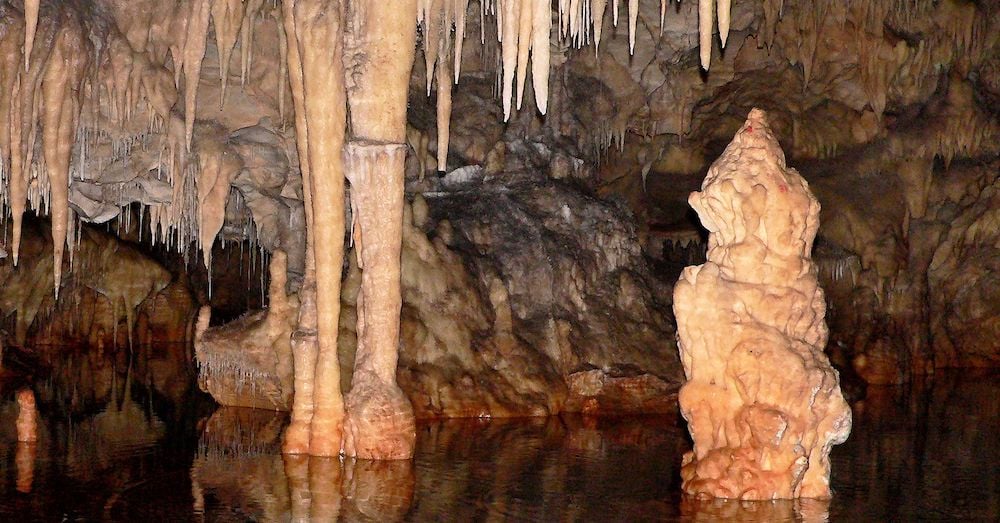

Alepotrypa Cave, located in the Peloponnese in Greece, is home to one of the largest Neolithic burial sites in Europe.
Located in the rugged area of Mani, the cave is part of the Caves of Diros complex. It was inhabited during the Neolithic period, or New Stone Age (10,000 to 4,500 BC), and was also used for burial and religious purposes.
It was during this period that humans began to establish settlements and cultivate the land, leading to the development of agriculture as we know it.
Burials in the cave span from around 8,000 to 5,200 years ago, with archaeologists discovering remains of at least 170 individuals. Among the findings are two adult skeletons dating to roughly 6,000 years ago.
Alepotrypa, or “Fox Hole,” Cave, clearly retained its significant status for many years. Though abandoned around 3,200 BC, it was later reused as a Mycenaean burial ground, with archaeologists uncovering a Mycenaean ossuary believed to date to the 2nd millennium BC.
The cave was abandoned for the final time after a massive earthquake blocked the entrance to the site. This blockage actually helped preserve the ancient contents within the cave.
A treasure trove of ancient discoveries, the site has been excavated since 1970; it has yielded many important findings that contribute to our understanding of the period and the people who lived in the region at the time.
Archeological findings suggest that the earliest inhabitants of the cave were farmers who consumed mainly barley and wheat. Non-fatal head injuries identified on many of the skulls in the cave indicate that life in those times was often marred by violence and conflict.
Inhabitants not only used the cave as shelter but also as a burial and cult site. In addition to the many skeletons found there, archeologists have also discovered an idol made of marble.
Late Neolithic weapons, pottery, jewelry, and miscellaneous other artifacts, such as stone axes, shell beads, and arrowheads, have all been found at Alepotrypa Cave.
Jewelry made of silver, which was an extremely rare and highly valued substance across Europe at the time, suggests that the inhabitants of the cave were wealthy.
Additionally, scholars have discovered an early copper ax at the site, which is also an extremely rare find for the time period.
Some archeologists believe that the site’s prominence as a burial site, which lasted for thousands of years from 6,000 to 3,500 BC and was later revived during the Mycenaean period, may have its roots in Greek mythology.
Several scholars have posited that the underground cave may be linked to Hades and the underworld, which was said to have an entrance in the same region of the Peloponnese in ancient Greek myth.
Theopetra Cave in Thessaly in Central Greece was formed in the Upper Cretaceous period about 137 million to 65 million years before the present time.
According to archeologists, the cave is likely to be the place of the oldest human construction on earth, as findings indicate that the shelter was inhabited as early as 130,000 years ago.
Excavations at Theopetra began in 1987 under direction of the archeologist Dr. Catherine Kyparissi-Apostolika, honorary head of the Ephorate of Palaeoanthroplogy and Speleography of Greece’s Ministry of Culture and Sports.
Theopetra Cave is home to one of the longest archeological sequences in the entire country, as remains of Paleolithic, Mesolithic, and Neolithic cultures have all been found there.
